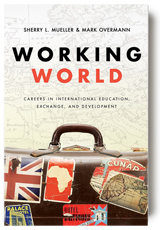
On the heels of many discussions about networking, especially involving my own distaste for attending networking events (namely here and here), my girlfriend Katie, a certified foodie, gchatted me this:
so here is my theory about a possible approach to networking -
it’s the same as jeffrey steingarten’s approach to foods we don’t like -
try it at least 8 times, and the chance is, if you don’t like it, at least you will develop an appreciation for it
A very intriguing thought. She’d mentioned Steingarten’s book, The Man Who Ate Everything, to me before, as well as its underlying theory, so I checked it out. Steingarten has been the food critic at Vogue since 1989 (and is also a regular judge on Iron Chef, for those who frequent the Food Channel), but he also, somewhat notriously for a food critic, has an intense aversion to a whole lot of foods. So, in writing The Man Who Ate Everything, he set out to stem these aversions. Here’s Steingarten’s basic theory on how he got himself to like foods he’d traditionally hated:
Scientists tell us that aversions fade away when we eat moderate doses of the hated foods at moderate intervals, especially if the food is complex and new to us. Exposure works by overcoming our innate neophobia, the omnivore’s fear of new foods that balances the biological urge to explore for them.
Steingarten later notes that while babies might reject a new food on the first few tries, after eight or ten tries, they will accept nearly anything. So the same is (or can be) true for adults. Steingarten managed to overcome nearly all of his food phobias through this approach of trying things eight to ten times. Through this process of acclimatization and de-stigmatization, he came to find he now appreciates and enjoys the foods he once loathed.
So for Katie, by applying this theory to networking (especially attending networking events, during which you are required to be social and chat up people you don’t know), the theory becomes: though you may have an aversion to networking and networking events, if you force yourself to go to them (eight to ten times), you can then overcome your distaste and actually enjoy them. There’s definitely merit in this theory and, upon reflection, I’ve probably unconsciously experienced it to be true (the more networking events I’ve attended, the less I hate them to the point that I even enjoy them). But, a few caveats/discussion points:
1) It’s not just quantity here—quality and experience are important too. Take Steingarten’s battle with anchovies: “My phobia crumpled when I understood that the anchovies living in American pizza parlors bear no relation to the sweet, tender anchovies of Spain and Italy, cured in dry sea salt and a bit of pepper.” He overcame his dislike of anchovies not only by eating a lot of them, but also by becoming more experienced with them, by realizing that the anchovies he’d been eating— and had thus hated—were empirically inferior anchovies (of course you didn’t like them, an anchovy connoisseur would say). The taste of truly good anchovies is a whole lot easier to like than that of bad ones.
Transferred to networking, this idea comes to mean that, the more networking events that you attend: 1) the more you’ll be able to discern between “good” networking events and “bad” ones (i.e., what events hold the most interest for you, and thus which ones you’ll be most engaged at—just as Steingarten didn’t just stuff his face with raw anchovies to overcome his distaste, but rather learned more about the best ways to prepare and eat anchovies, so we too should not just attend every networking event we come across, but rather pick and choose those that are best for us); and 2) the more you’ll understand how you function best at networking events (i.e., always going with a friend or colleague, showing up early when it’s less crowded so it’s easier to meet people, etc.).
2) I’m fascinated by Steingarten’s assertion that we have to balance our innate, omnivorous fear of new foods with our biological urge to explore for them. We both love and fear the novel. It’s interesting to apply this idea to social situations like networking. Perhaps we all have some innate need for human contact and socialization, but at the same time a fear of those people we don’t know. That need-fear ratio is present in all people, but simply at different levels, just like the balance of “urge to explore-fear of the new” with foods is different in all people. I guess the key then becomes recognizing where we as individuals stand on that balance (are we more in need of networking socialization, or more fearful of it?), and then determining how we can best compensate one way or the other.




